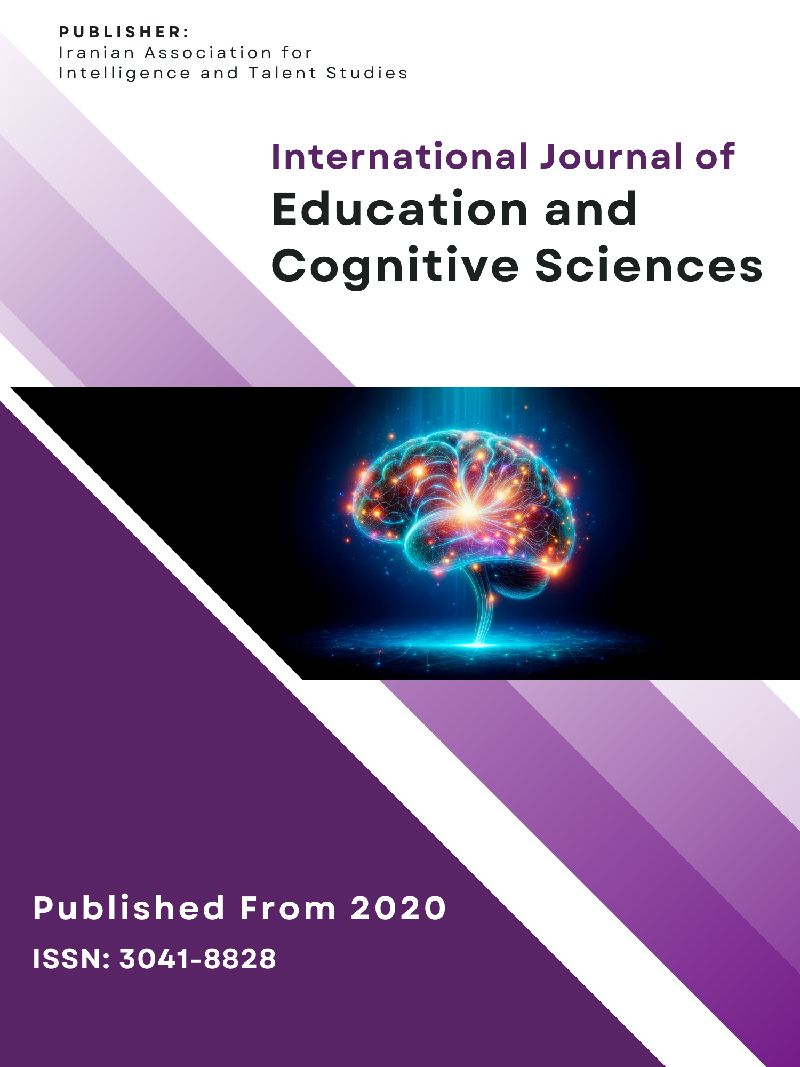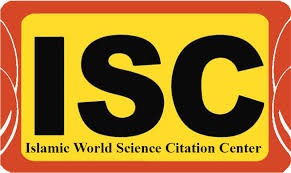Mind, Body, and Language: Bridging Theoretical and Empirical Perspectives in Cognitive Science and Education
Keywords:
Embodied cognition, First language acquisition, Second language acquisition, AI learning models, Cognitive linguistics, Sensorimotor interaction, Language and the brainAbstract
Purpose: This study aims to explore the interrelationship between the mind, body, and language and to assess how linguistic theories and cognitive science inform a holistic model of language acquisition.
Methods and Materials: The research employs a qualitative content analysis methodology, examining scholarly texts across linguistics, cognitive science, SLA, and AI. Texts were selected from peer-reviewed journals and seminal books, and analyzed using a coding scheme to identify key concepts such as embodied cognition, sensorimotor interaction, and social context. The analysis is structured around five linguistic frameworks—Generative Grammar, Cognitive Linguistics, Functionalism, Post-Structuralism, and Sociocultural Theory—and how each relates to language, mind, and body.
Findings: The study reveals that traditional cognitive models like Generative Grammar view language acquisition as a mental process, minimizing the body’s role. In contrast, Cognitive Linguistics, Functionalism, and Sociocultural Theory emphasize the embodied and socially mediated nature of language learning. Empirical findings show that gestures, motor actions, and physical engagement are essential for both FLA and SLA. Moreover, embodied AI systems, which integrate sensorimotor feedback, increasingly mimic human-like language learning. Cognitive Linguistics and Sociocultural Theory were found to be most applicable to real-world and AI-based language learning contexts due to their focus on the integration of physical, cognitive, and social dimensions.
Conclusion: This research advocates for a paradigm shift in understanding language acquisition as a holistic process involving the mind, body, and environment. It demonstrates that embodied and socially interactive learning models provide a more comprehensive framework for both human and machine language learning. The findings suggest that future educational and AI systems should prioritize embodiment and contextual interaction to enhance language processing and retention.
Downloads
References
Afshar, H., Rezaei, M., & Shahriari, H. (2022). The role of gestures in first language acquisition among Iranian children. Journal of Language Development, 14(2), 45-67.
Aslani, M., & Noroozi, O. (2016). Investigating the Impact of Embodied Learning Approaches on Iranian EFL Learners' Vocabulary Retention. International Journal of Education and Literacy Studies, 4(2), 52-60.
Bergen, B. (2020). Embodied Construction Grammar: Insights from the interaction of language and the body. Cognitive Linguistics, 34(2), 289-319. https://doi.org/10.1515/cog-2020-0031
Chomsky, N. (2015). What kind of creatures are we? Columbia University Press. https://doi.org/10.7312/chom17596
Cochran, S., & Osborn, J. (2016). Embodied cognition and language: Recent developments in cognitive linguistics. Linguistics and Philosophy, 39(2), 161-184. https://doi.org/10.1007/s10988-016-9177-6
Derrida, J., & Spivak, G. C. (1976). Of grammatology. Johns Hopkins University Press. https://www.google.com/url?sa=t&source=web&rct=j&opi=89978449&url=https://monoskop.org/images/8/8e/Derrida_Jacques_Of_Grammatology_1998.pdf&ved=2ahUKEwiG7ZW72LyOAxWJBtsEHdgsA2wQFnoECBwQAQ&usg=AOvVaw3gBWQovj0bQtMm8ZH2iyHv
Ellis, R. (2008). The study of second language acquisition. Oxford University Press.
Foucault, M. (1977). Discipline and punish: The birth of the prison. Pantheon Books. https://www.google.com/url?sa=t&source=web&rct=j&opi=89978449&url=https://monoskop.org/images/4/43/Foucault_Michel_Discipline_and_Punish_The_Birth_of_the_Prison_1977_1995.pdf&ved=2ahUKEwiU4pju2LyOAxXk8LsIHeTVKKcQFnoECBEQAQ&usg=AOvVaw20n08l0Y7eI9NcbuwkrLy-
Glenberg, A. M. (2008). Embodiment and language. In S. In: The Cambridge Handbook of Cognitive (Ed.), (pp. 468-488).
Glenberg, A. M., & Kaschak, M. P. (2002). Grounding language in action. Psychonomic Bulletin & Review, 9(3), 558-565. https://doi.org/10.3758/BF03196313
Glenberg, A. M., & Robertson, D. A. (2000). Symbol grounding and meaning: A comparison of high-dimensional and embodied theories of meaning. Journal of Memory and Language, 43(3), 433-457. https://doi.org/10.1006/jmla.2000.2704
Goldin-Meadow, S. (2003). The resilience of language: What gesture creation in deaf children can tell us about how all children learn language. Psychology Press. https://www.taylorfrancis.com/books/mono/10.4324/9780203943267/resilience-language-susan-goldin-meadow
Guan, S. (2024). Research on the Reconstruction of Language Teaching Cognitive Process by the Advanced Achievements in Neurolinguistics. Journal of Educational Research and Policies, 6(7), 94-99. https://doi.org/10.53469/jerp.2024.06(07).20
Guoxiong, Q., & Kuan, Z. (2024). Research on Role of Affective Language in English Cognitive Linguistics. Applied & Educational Psychology, 5(1). https://doi.org/10.23977/appep.2024.050101
Halliday, M. A. K. (1978). Language as social semiotic: The social interpretation of language and meaning. Edward Arnold. https://www.torrossa.com/gs/resourceProxy?an=5015200&publisher=FZ4850#page=274
Hauk, O., Johnsrude, I. S., & Pulvermüller, F. (2004). Somatotopic representation of action words in the motor cortex. Nature, 427(6972), 1-4. https://doi.org/10.1038/nature02270
Huda, V. H. (2025). Psikolinguistik Dalam Pembelajaran Bahasa Arab: Analisis Kognitif Dan Pengaruh Sosial-Budaya. Uktub Journal of Arabic Studies, 5(1), 89-101. https://doi.org/10.32678/uktub.v5i1.11
Kanchan, K. (2024). A Study of Non-Cognitive Factors Influencing Second Language Acquisition of Elementary School Students of Delhi. Journal of Advances and Scholarly Researches in Allied Education, 21(6), 126-130. https://doi.org/10.29070/tmy4rb81
Khezri, M., & Sadeghi, A. (2021). The role of physical gestures in first language acquisition: Evidence from Iranian children. Iranian Journal of Applied Linguistics, 22(3), 200-215.
Kia, S. M., & Tavakoli, M. (2019). The Role of the Body in Language Processing: Insights from Cognitive Science and Iranian Learners. Journal of Cognitive Science, 12(3), 45-57.
Kiefer, M., & Pulvermüller, F. (2012). Conceptual representations in the brain: Theoretical developments and implications for neuroimaging. Frontiers in psychology, 3, 215. https://doi.org/10.3389/fpsyg.2012.00215
Kiefer, M., & Pulvermüller, F. (2021). The interaction of language, cognition, and the body: Insights from cognitive neuroscience. Journal of Cognitive Neuroscience, 33(1), 43-57. https://doi.org/10.1162/jocn_a_01548
Komala, I., Wardani, Y. A., Mulawarman, W. G., & Suhatmady, B. (2025). Cognitive Processes in the Formation of Language Meaning. Adv, 3(1), 74-82. https://doi.org/10.46799/adv.v3i1.327
Krishnan, R., & Vinodhini, S. (2024). Impact of Language Processing on the Growth of Cognitive Abilities. Shanlax International Journal of English, 12(3), 40-42. https://doi.org/10.34293/english.v12i3.7620
Lakoff, G., & Johnson, M. (1999). Philosophy in the flesh: The embodied mind and its challenge to Western thought. Basic Books. https://www.academia.edu/download/3621568/flesh.pdf
Lustiyantie, N., Chaeruman, U. A., & Rajaguk-guk, S. B. (2025). Cognitive and Affective Roles in Language and Literature Learning at the Secondary School Level (A Literature Study). Eduvest - Journal of Universal Studies, 5(5), 5121-5131. https://doi.org/10.59188/eduvest.v5i5.49940
Mishin, F. I. (2025). Barriers and Opportunities: Russian Sign Language as a Tool for Development of Children’s Cognitive Deaf Abilities. 76-78. https://doi.org/10.31483/r-127529
Mohamed, A. F. (2024). Bilingualism's Influence on Cognitive Development. Advances in Social Sciences Research Journal, 11(9), 234-241. https://doi.org/10.14738/assrj.119.17608
Muratkhodjayeva, F. (2024). Cognitive Linguistics Theory in Anthropocentric Paradigm. Ijietom, 2(2), 63-70. https://doi.org/10.62157/ijietom.v2i2.63
Parween, S., Jameer, R., Yarlagadda, S. R., Emimal, M., & Kumuja, V. T. (2025). Cognitive and Neurophysiological Correlates of English Language Learning: A Multidisciplinary Investigation. Journal of Neonatal Surgery, 14(12S), 936-941. https://doi.org/10.52783/jns.v14.3501
Pfeifer, R., & Bongard, J. (2006). How the body shapes the way we think: A new view of intelligence. MIT Press. https://doi.org/10.7551/mitpress/3585.001.0001
Pulvermüller, F. (2013). The neuroscience of language: On brain circuits of words and serial order. Cambridge University Press. https://books.google.com/books?hl=en&lr=&id=OiL__xi--9QC&oi=fnd&pg=PR11&dq=Pulverm%C3%BCller,+F.+(2013).+The+neuroscience+of+language:+On+brain+circuits+of+words+and+serial+order,+Cambridge+University+Press.+%09&ots=iJ_KEOtvKu&sig=IAt_VioVpyk0KqKob_26r3RBTlo
Pulvermüller, F., & Fadiga, L. (2019). The neural representation of action-related language. Frontiers in psychology, 10, 1681. https://doi.org/10.3389/fpsyg.2019.01681
Rahimi, M., & Ranjbar, S. (2021). The Role of Artificial Intelligence in Language Learning: Perspectives from Iran. Language Education and Technology Review, 6(1), 80-92.
Shahbazian, A., Fadaei, M., & Tofighi, R. (2023). Embodied cognition in AI language models: Applications in second language learning. AI and Learning Technologies, 18(1), 77-92.
Shibata, T., & Komori, M. (2022). Embodied language processing: A new perspective on second language acquisition. Language Learning, 72(2), 325-352. https://doi.org/10.1111/lang.12435
Vygotsky, L. S. (1978). Mind in society: The development of higher psychological processes. Harvard University Press. https://books.google.com/books?hl=en&lr=&id=RxjjUefze_oC&oi=fnd&pg=PA1&dq=Vygotsky,+L.+S.+(1978).+Mind+in+society:+The+development+of+higher+psychological+processes,+Harvard+University+Press.+%09&ots=okAWU5p2ep&sig=EZ25yHTGzUNRqlerROComxv1HgI
Zarei, M., & Moini, M. (2020). The impact of motor-based activities on second language acquisition: Evidence from Iranian classrooms. Iranian Journal of Language Studies, 16(4), 325-340.
Zhang, X., & Li, Y. (2023). The role of embodied cognition in neural networks for language learning: Implications for AI and human cognition. Cognitive Systems Research, 75, 56-73. https://doi.org/10.1016/j.cogsys.2022.11.004
Аметова, А. (2024). Red- Colour Idioms in the Karakalpak and English Languages. Авлпия, 1(1), 284-286. https://doi.org/10.47689/topical-tiltfl-vol1-iss1-2024-pp284-286
Downloads
Published
Submitted
Revised
Accepted
Issue
Section
License
Copyright (c) 2025 Maryam Shahrokhi Shahraki

This work is licensed under a Creative Commons Attribution-NonCommercial 4.0 International License.










